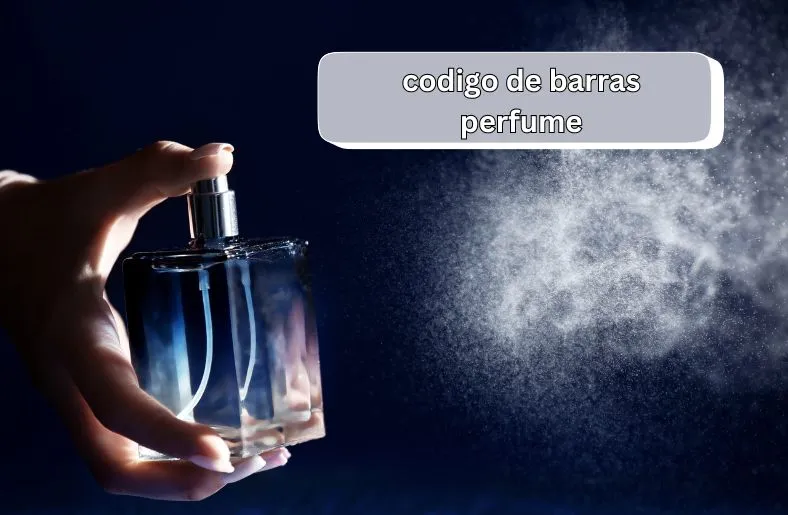Introduction
Step into the world of fragrances where every scent holds a unique tale, unlocked through the enigmatic Codigo de Barras Perfume. In the realm of perfumery, these barcodes are more than just black and white lines; they are gateways to understanding the essence within each bottle. Imagine them as secret codes that reveal the origins, ingredients, and even the journey of a perfume from creation to your shelf.
Exploring Codigo de Barras Perfume opens a door to a hidden world of fragrance craftsmanship. While we often overlook them on perfume packaging, these barcodes are meticulously designed to offer insights beyond what meets the eye. By decoding them, you gain access to a wealth of information crucial for both enthusiasts and consumers alike.
In this blog post, we delve deep into the significance of perfume barcodes, their role in ensuring authenticity, and how they streamline the perfume industry’s supply chain. Join us as we unravel the mysteries behind Codigo de Barras Perfume and discover why understanding these codes is essential for anyone captivated by the art of scent.
History and Evolution of Codigo de Barras Perfume
Codigo de Barras Perfume has a captivating history that begins with a vision for creating unique and captivating scents. Founded by passionate perfumers, this brand quickly gained renown for its innovative approach to fragrance creation.
Over the years, it has continued to push boundaries and explore new scent combinations, staying true to its commitment to quality and creativity. Each new release from Codigo de Barras Perfume has delighted perfume enthusiasts worldwide, offering a diverse range of fragrances to suit various preferences.
As trends in the perfume industry evolved, so did Codigo de Barras Perfume, adapting and staying ahead of the curve. By blending traditional methods with modern techniques, the brand has established itself as a leader in the global perfumery landscape.
With an unwavering dedication to excellence and innovation, Codigo de Barras Perfume remains a timeless choice for those seeking distinctive and memorable scents. Its journey from inception to present day is a testament to its ability to innovate while maintaining a high standard of quality.
Today, Codigo de Barras Perfume stands out for its commitment to using premium ingredients sourced from around the world. Each fragrance is meticulously crafted to evoke unique emotions and experiences, ensuring that every bottle tells a story of luxury and sophistication.
Significance and Functions of Perfume Barcodes
Perfume barcodes, like Codigo de Barras Perfume, play a crucial role in the fragrance industry. These barcodes are not just ordinary lines on a package; they contain vital information that ensures authenticity and facilitates efficient inventory management.
Firstly, perfume barcodes serve as a tool to authenticate genuine products. By scanning the barcode, consumers and retailers can verify the origin and authenticity of the perfume, protecting against counterfeit products.
Secondly, these barcodes streamline inventory management processes for retailers. By scanning barcodes, retailers can track stock levels accurately, ensuring popular perfumes are always available while minimizing overstocking.
Moreover, perfume barcodes enhance supply chain efficiency. From manufacturing to distribution, these codes enable seamless tracking of perfume products, ensuring timely deliveries and reducing logistical errors.
Additionally, barcodes provide consumers with valuable information about the perfume. By scanning the barcode, consumers can access details such as ingredients, manufacturing date, and even product reviews, aiding informed purchasing decisions.
Structure and Components of a Perfume Barcode
Understanding the structure of a perfume barcode is essential for grasping its functionality in the fragrance industry. A perfume barcode appears as a series of black and white lines, often resembling a rectangular pattern on the product packaging.
These barcodes are designed with precision, consisting of bars and spaces that encode specific information about the perfume. The varying widths and spacing between these bars and spaces contain encoded data that can be read by barcode scanners.
Each part of the barcode serves a distinct purpose. The bars represent binary data, while the spaces between them help differentiate between characters. Together, they form a unique identifier for each perfume product.
The numerical data embedded in the barcode includes essential details such as the manufacturer’s code, product type, batch number, and sometimes even the fragrance’s composition. This information aids in inventory management and ensures traceability throughout the supply chain.
Barcode scanners emit light beams that read these patterns, converting them into electrical signals. These signals are then processed by computers, which decode the information stored within the barcode.
Interpreting Perfume Barcodes
Interpreting perfume barcodes involves decoding the encoded information to understand essential details about the fragrance. Each barcode contains a unique set of numbers and patterns that represent specific characteristics of the perfume.
When scanned, a perfume barcode reveals details such as the manufacturer’s identity, the type of fragrance (e.g., eau de parfum), and the product’s batch or lot number. These elements help ensure product authenticity and traceability.
The numerical data within the barcode is organized into sections, each serving a distinct purpose. For instance, the initial digits often denote the manufacturer or brand, followed by codes indicating the product variant or size.
Manufacturers use standardized formats to ensure consistency across different products and brands. This uniformity helps retailers and consumers quickly identify and verify perfume products.
Analyzing the barcode also provides insights into the perfume’s ingredients and composition. This information is crucial for consumers who may have specific preferences or allergies.
Understanding how to interpret perfume barcodes empowers both retailers and consumers. It facilitates accurate inventory management, enhances consumer confidence in product authenticity, and supports informed purchasing decisions.
Consumer Benefits of Understanding Perfume Barcodes
Understanding perfume barcodes offers several benefits to consumers. Firstly, it provides assurance of product authenticity, ensuring that the perfume purchased is genuine and meets quality standards. By scanning the barcode, consumers can verify details such as the manufacturer, product type, and ingredients, helping them make informed purchasing decisions.
Moreover, decoding perfume barcodes enables consumers to access comprehensive information about the fragrance’s composition and origin. This transparency allows individuals to choose perfumes that align with their preferences and avoid allergens or undesirable ingredients.
Additionally, knowing how to interpret barcodes facilitates easy price comparison across different retailers. Consumers can scan the barcode to check prices and promotions, ensuring they get the best value for their money.
Furthermore, understanding perfume barcodes enhances the overall shopping experience by providing insight into the perfume’s characteristics before making a purchase. This knowledge empowers consumers to confidently explore new fragrances and appreciate the craftsmanship behind each bottle.
Conclusion
In conclusion, exploring Codigo de Barras Perfume unveils a world where fragrances are more than scents; they are stories waiting to be told. From its rich history and evolution in perfumery to the intricate significance of perfume barcodes, each element underscores the brand’s commitment to quality and innovation. By understanding these barcodes, consumers gain transparency, authenticity verification, and informed decision-making capabilities. They empower us to navigate the perfume industry with confidence, ensuring every purchase reflects our preferences and values. Codigo de Barras Perfume stands as a testament to the artistry and craftsmanship that defines luxury fragrance today.





